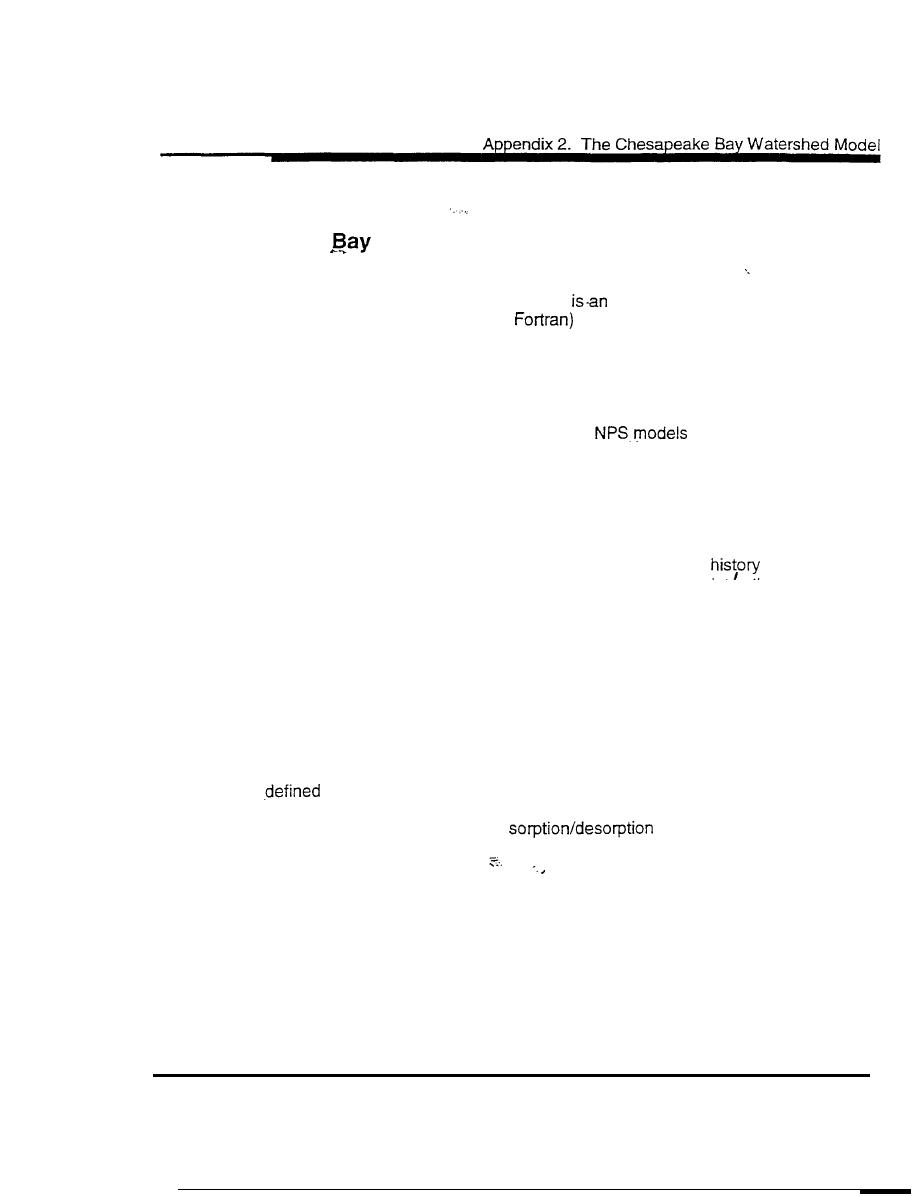
Appendix
2
The Chesapeake
Watershed Model
(Center for Exposure Assessment Modeling, 1994)
application of the HSPF model
The Chesapeake Bay Watershed model
(Hydrologic Simulation Program:
to the Chesapeake Bay watersheds.
The model is one part of an integrated set of models designed to assess the
impact of nutrient loads on the Bay system.
HSPF is a comprehensive package for simulation of watershed hydrology and
water quality for both conventional and toxic organic pollutants. HSPF
into a basin-scale
incorporates the watershed-scale ARM and
analysis framework that includes fate and transport in one-dimensional stream
channels. It is the only comprehensive model of watershed hydrology and water
quality that allows the integrated simulation of land and soil contaminant runoff
processes within-stream hydraulic and sediment-chemical interactions.
The result of this simulation is a time history of the runoff flow rate, sediment load,
of water
and nutrient and pesticide concentrations, along with a time
quantity and quality at any point in a watershed. HSPF simulates three sediment
types (sand, silt, and clay) in addition to a single organic chemical and
transformation products of that chemical. The transfer and reaction processes
included are hydrolysis, oxidation, photolysis, biodegradation, volatilization, and
sorption. Sorption is modeled as a first-order kinetic process in which the user
must specify a desorption rate and an equilibrium partition coefficient for each of
the three solids types.
Resuspension and settling of silts and clays (cohesive solids) are defined in
terms of shear stress at the sediment water interface. The capacity of the system
to transport sand at a particular flow is calculated and resuspension or settling is'
by the difference between the sand in suspension and the transport
capacity. Calibration of the model requires data for each of the three solids types.
Benthic exchange is modeled as
and deposition/scour with
sut-ficial benthic sediments. Underlying sediment and pore water are not
modeled.
Data Requirements
Data needs for HSPF can be extensive. HSPF is a continuous simulation
program and requires continuous data to drive the simulations. At a minimum,
continuous rainfall records are required to drive the runoff model and additional
records of evapotranspiration, temperature, and solar intensity are desirable. A
large number of model parameters can be specified although default values are
provided where reasonable values are avaiiable. HSPF is a general-purpose
67



 Previous Page
Previous Page
